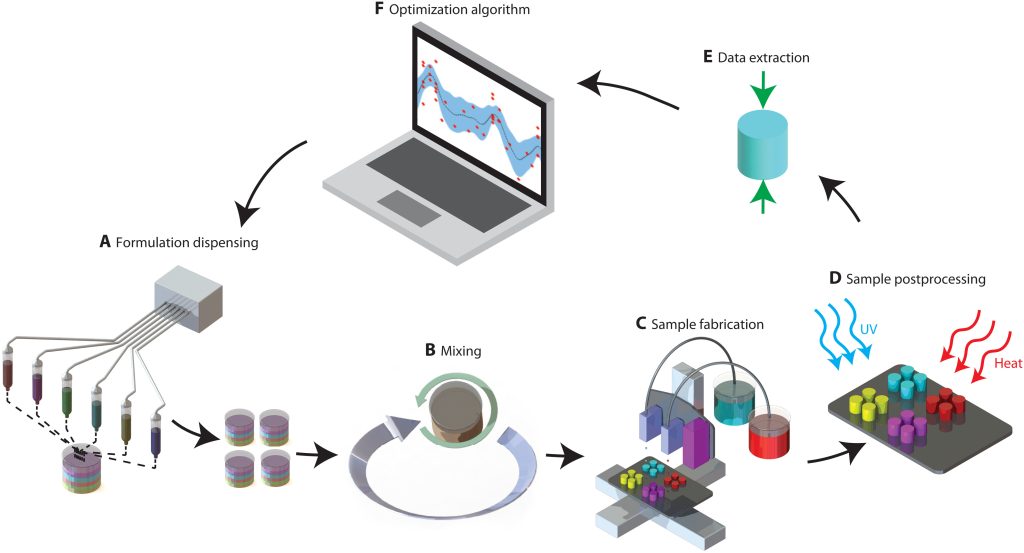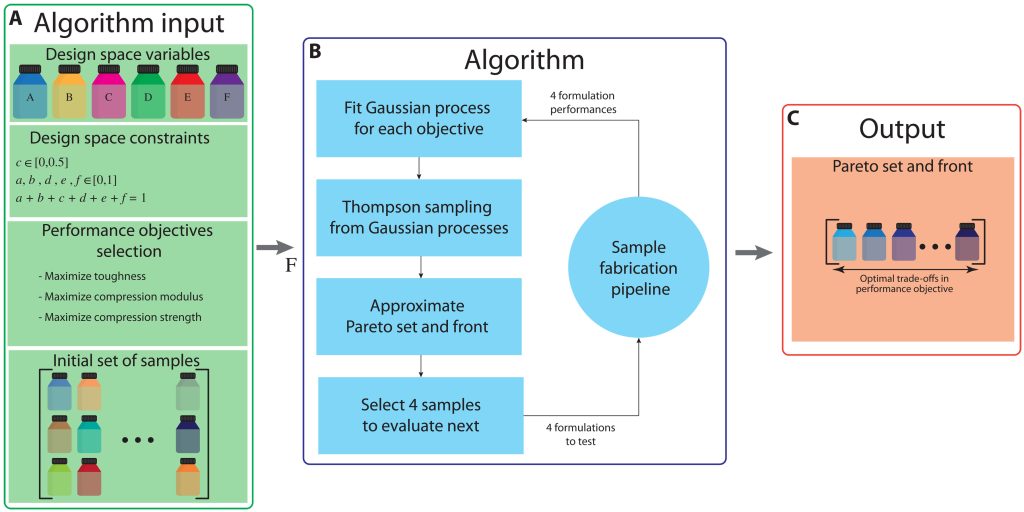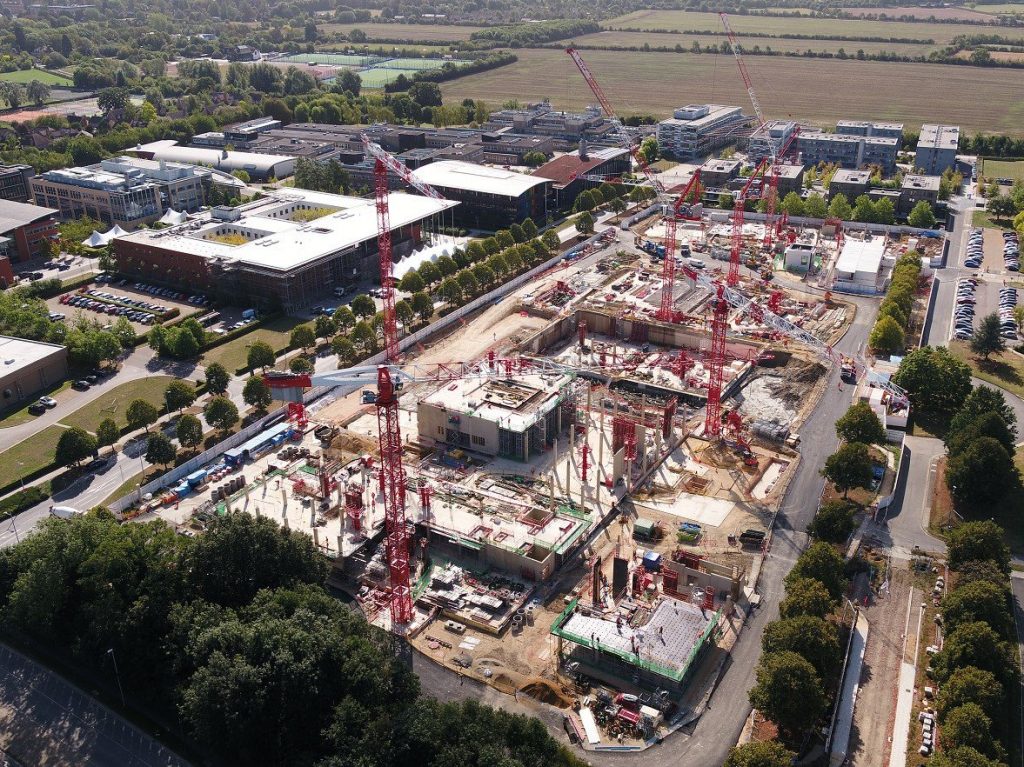Voting shortlists for the 2021 3D Printing Industry Awards are now open. Who do you think should receive top honors this year? Have your say now.
Interested in tuning in? The Youtube livestream link is also live, so viewers can now subscribe and set reminders to ensure they don’t miss out.
Engineers at the Massachusetts Institute of Technology (MIT) have developed a machine learning (ML) algorithm with the potential to expedite the process of identifying 3D printable materials.
Packaged within their ‘AutoOED’ software, the team’s optimization algorithm is capable of automatically identifying viable printing materials with desired qualities such as toughness, rigidity or compressive strength. In doing so, the program allows users to bypass the costs, lead times and waste incurred via traditional resin formulation, and potentially find mixtures that have evaded human-led R&D.
“Materials development is still very much a manual process,” said the paper’s co-lead author Mike Foshey. “A chemist goes into a lab, mixes ingredients by hand, makes samples, tests them and comes to a final formulation. But rather than having a chemist who can only do a couple of iterations over a span of days, our system can do hundreds of iterations over the same time span.”

Overcoming material R&D’s ‘speed limit’
At present, developing new 3D printing materials requires manufacturers to have an in-depth knowledge of polymer chemistry, as well as the equipment and backing needed to conduct lengthy evaluations. This manual process also allows for the evaluation of just one factor per sample, limiting the accessibility, efficiency and scalability of material R&D.
In order to unlock the more rapid development of application-specific 3D printing resins, the MIT team has therefore identified the need for an autonomous R&D cycle. To achieve this, researchers have previously experimented with algorithm-driven and quantum dot synthesis-based robotics, but these approaches generally retain a single-object optimization approach, limiting their practicality.
AutoOED: ML-led material research
To expedite material R&D, the MIT team has identified a need for data-efficient optimization algorithms, particularly those with multi-tasking capabilities, and to address this demand, they have now created AutoOED. Designed to seek out novel photocurable inks, the team’s workflow involves taking a multiobjective approach, in which a revised algorithm effectively minimizes the number of trials required.
Theoretically, the team’s software works by asking users to input the quantities of a potential material’s ingredients as well as the properties it needs to have, before it uses this data to calculate an ideal formula. Once a material prototype has been tested, any results can then be fed back into the algorithm, which then harnesses this information to suggest another to trial, in a tighter cyclical prototyping process.
“We think, for a number of applications, this would outperform conventional methods, because you can rely more heavily on the optimization algorithm to find the optimal solution,” explains Foshey. “You wouldn’t need an expert chemist on hand to preselect the material formulations.”

Testing an open-source algorithm
To assess the efficacy of their workflow, the engineers have attempted to create six inks that demonstrate improved properties compared to manually-formulated materials. After just 30 iterations, the team found that their algorithm was able to discover 12 3D printable resins, with some up to 70% stronger than normal, but most featuring “optimal trade-offs” in terms of toughness, stiffness and strength.
In addition to identifying potential material optimization opportunities, AutoOED was also able explore the R&D of materials with a larger variability in properties. During testing, for instance, the algorithm investigated formulations with compression strength or toughness increases of as much as 399%, and compression modulus rises of up to 584%.
As a result, the researchers’ workflow could now be ideal for identifying materials with applications that rely heavily on specific properties, which can’t easily be formulated by hand, and they believe their approach could yet yield a new generation of hydrogels, surgical sealants and nanocomposite coatings with aerospace or medical potential.
The team also see their workflow as an “automation-ready pipeline,” that within future iterations, could integrate robotics which automatically operate its material dispensing and mixing steps, to further expedite formulation. In the shorter-term, however, the engineers have now made their algorithm free to download on Github, to see what the creator community can do with their rapid material-finding tool.
“This has broad applications across materials science in general,” concludes Foshey. “For instance, if you wanted to design new types of batteries that were higher efficiency and lower cost, you could use a system like this to do it. Or if you wanted to optimize paint for a car that performed well and was environmentally friendly, this system could do that, too.”

Modernizing material research
Given their predictive capabilities, ML algorithms are potentially ideal for shortening the development cycles of various products, but printing materials have recently emerged as a hot topic of research. At Lehigh University, scientists have tested a novel ML material testing approach of their own, in which they used an artificial neural network to identify structural similarities between test specimens.
Elsewhere, in similar research, AI specialist Intellegens has worked with the Stone Group to develop a new DED-focused ML algorithm for evaluating novel 3D printing materials. Known as ‘Alchemite,’ the companies’ software effectively uses thermal resistance measurements as a basis for narrowing down the search for printable nickel-based alloys.
In construction applications, the Swinburne University of Technology has partnered with Bouygues Travaux Publics as part of a project that has seen it use ML to seek a way of optimizing the strength of 3D printable concrete. Through the initiative, the organizations also aim to devise an industry-standard for classifying 3D printed geopolymer samples, and a roadmap for grading future materials too.
The researchers’ findings are detailed in their paper titled “Accelerated discovery of 3D printing materials using data-driven multiobjective optimization,” which was co-authored by Timothy Erps, Michael Foshey, Mina Konakovic Lukovic, Hanns Hagen, Herve Dietsch, Klaus Stoll, Bernhard von Vacano and Wojciech Matusik.
To stay up to date with the latest 3D printing news, don’t forget to subscribe to the 3D Printing Industry newsletter or follow us on Twitter or liking our page on Facebook.
For a deeper dive into additive manufacturing, you can now subscribe to our Youtube channel, featuring discussion, debriefs, and shots of 3D printing in-action.
Are you looking for a job in the additive manufacturing industry? Visit 3D Printing Jobs for a selection of roles in the industry.
Featured image shows six of the 3D printable inks identified by the MIT researchers during testing. Image via the Science Advances journal.


